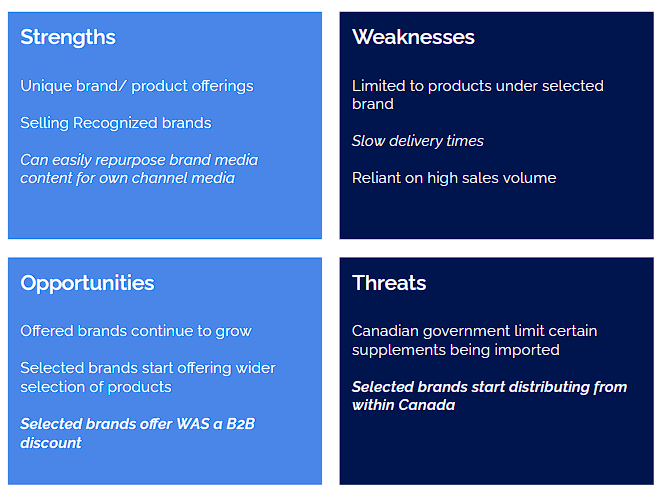In the fast-paced realm of business, having a rock-solid strategy is key to hitting your goals, whether you’re launching a new venture or steering an established company. One indispensable tool for this is the SWOT analysis, shorthand for Strengths, Weaknesses, Opportunities, and Threats.
Understanding the SWOT Analysis

Strengths & Weaknesses
These are internal aspects of your business, under your control. They encompass factors like team composition, intellectual property, and operational efficiency.
Opportunities & Threats
These are external factors, beyond your immediate influence. They include market trends, competitor actions, and regulatory changes.
The Importance of SWOT Analysis
Conducting a SWOT analysis offers a strategic roadmap for prioritizing tasks to foster business growth. It challenges you to reassess your business from various angles, revealing insights that might have been overlooked.
How to Execute a SWOT Analysis Effectively
- Assemble the Right Team: Bring together individuals from various areas of expertise within your company to ensure a comprehensive outlook.
- Brainstorm: Encourage independent idea generation using sticky notes, ensuring every voice is heard without the influence of groupthink.
- Rank and Prioritize: After organizing ideas, employ a voting system to prioritize them, facilitating structured decision-making.
Key Questions to Guide Your Analysis
Strengths
- What unique processes drive success?
- What assets differentiate us in the market?
- What advantages do we possess over competitors?
Weaknesses
- What areas require improvement to stay competitive?
- Are there gaps in our resources or team?
- Is our current location optimal for success?
Opportunities
- Are there emerging market trends in our favor?
- Can upcoming events be leveraged for growth?
- Are regulatory changes opening new avenues?
Threats
- Do potential competitors pose a threat?
- Are there risks associated with supplier dependencies?
- How might technological advancements disrupt our operations?
SWOT Analysis Example

Translating Analysis into Action
Once the SWOT analysis is complete, convert insights into actionable strategies. Leverage strengths to capitalize on opportunities and mitigate threats. Similarly, address weaknesses to better align with external opportunities and counter threats.
Moving Forward
A SWOT analysis is not a one-time exercise but a continuous process. Regular reassessment, ideally every six to 12 months, ensures your strategy remains agile and responsive to evolving market dynamics.
By harnessing the power of the SWOT analysis, businesses can navigate complexities with clarity and confidence, steering towards sustainable growth and resilience.
